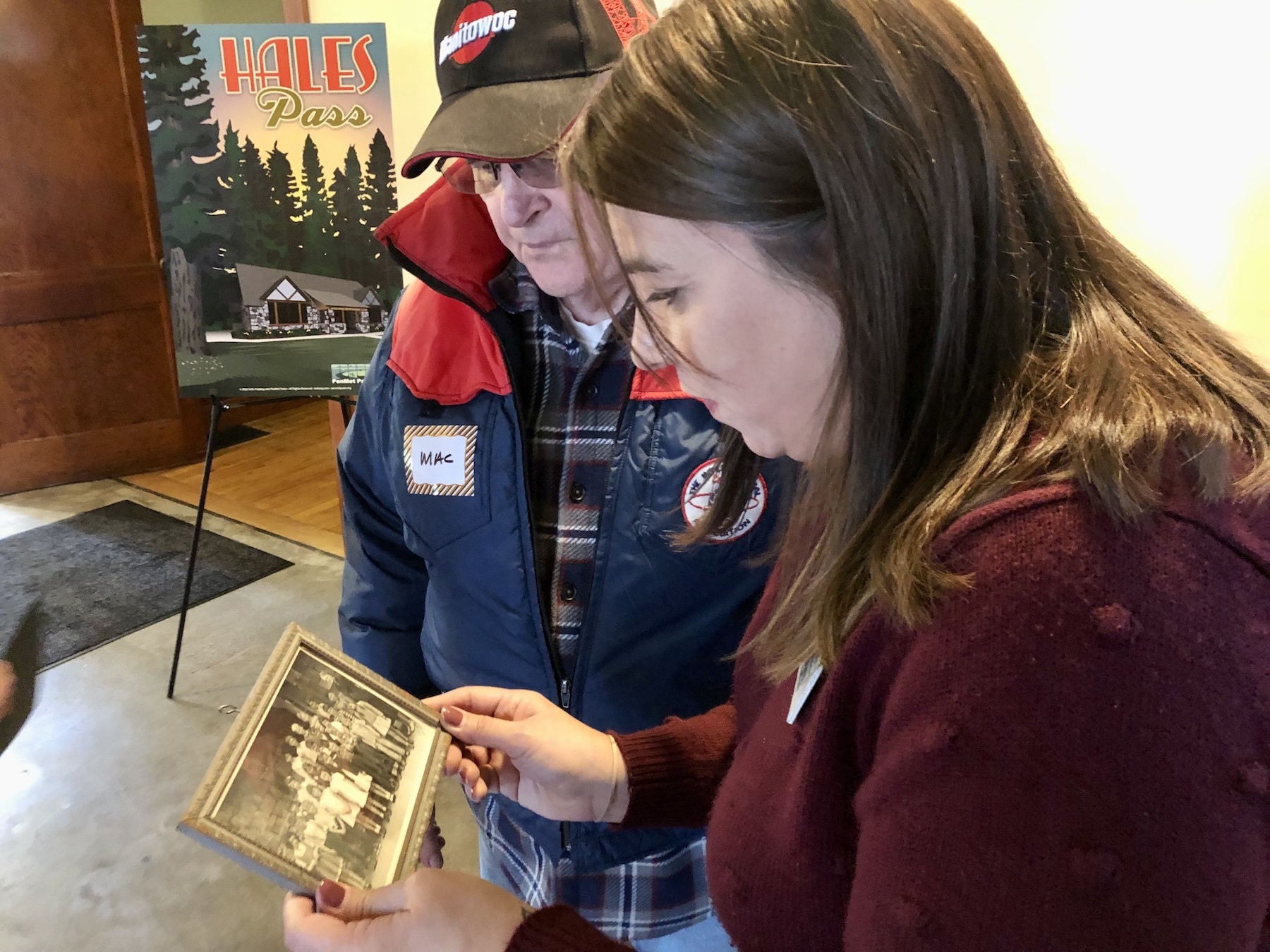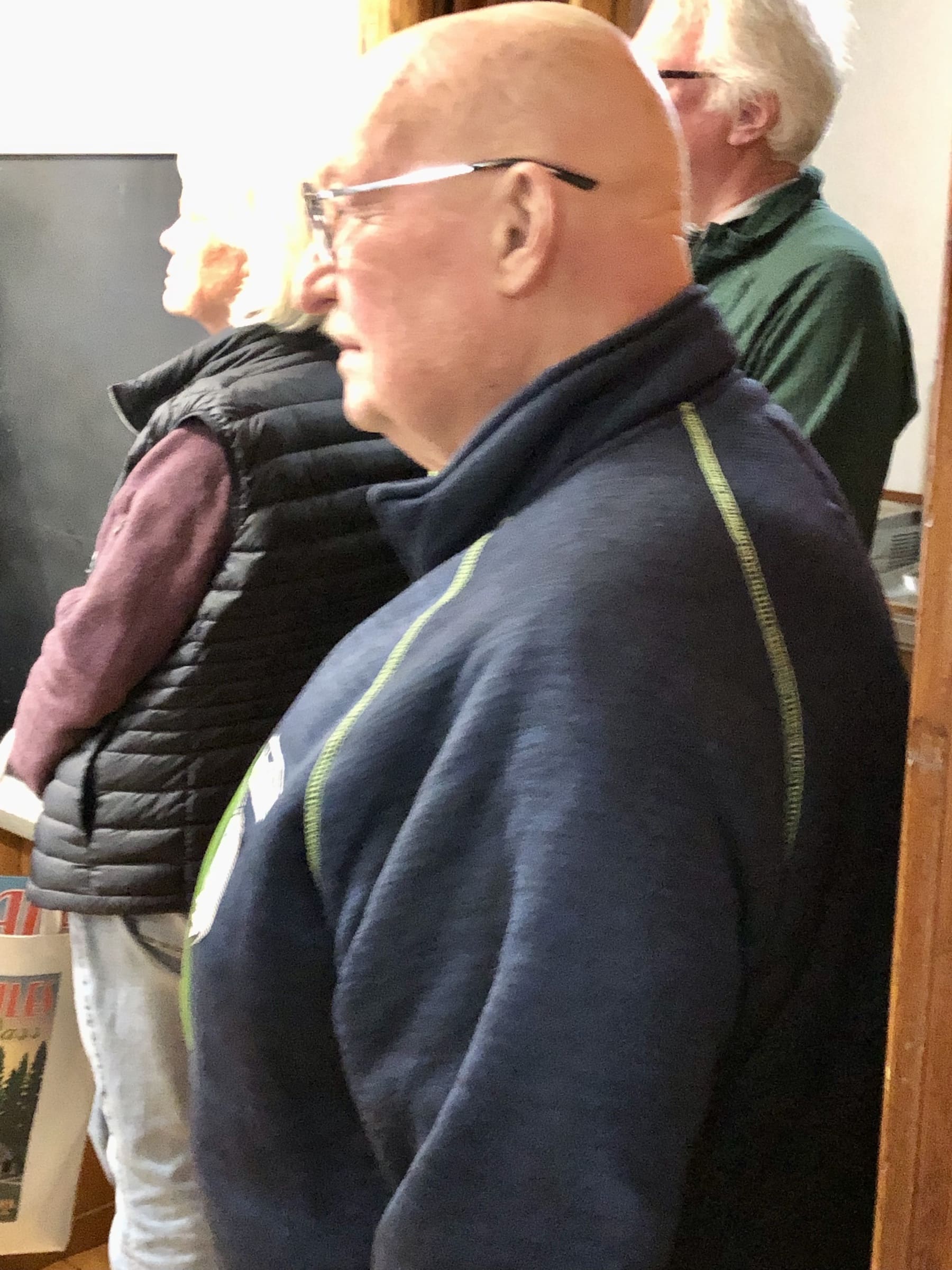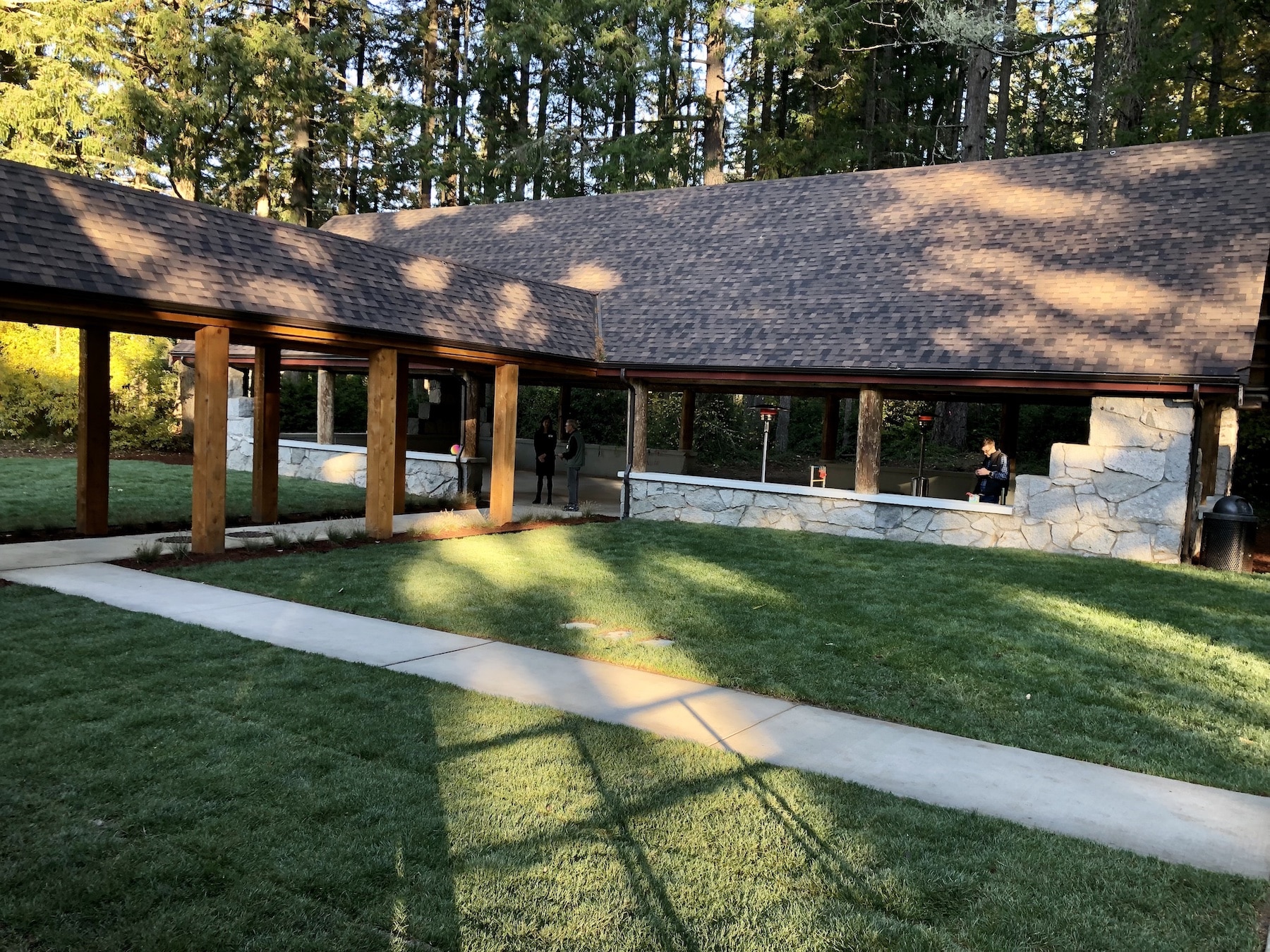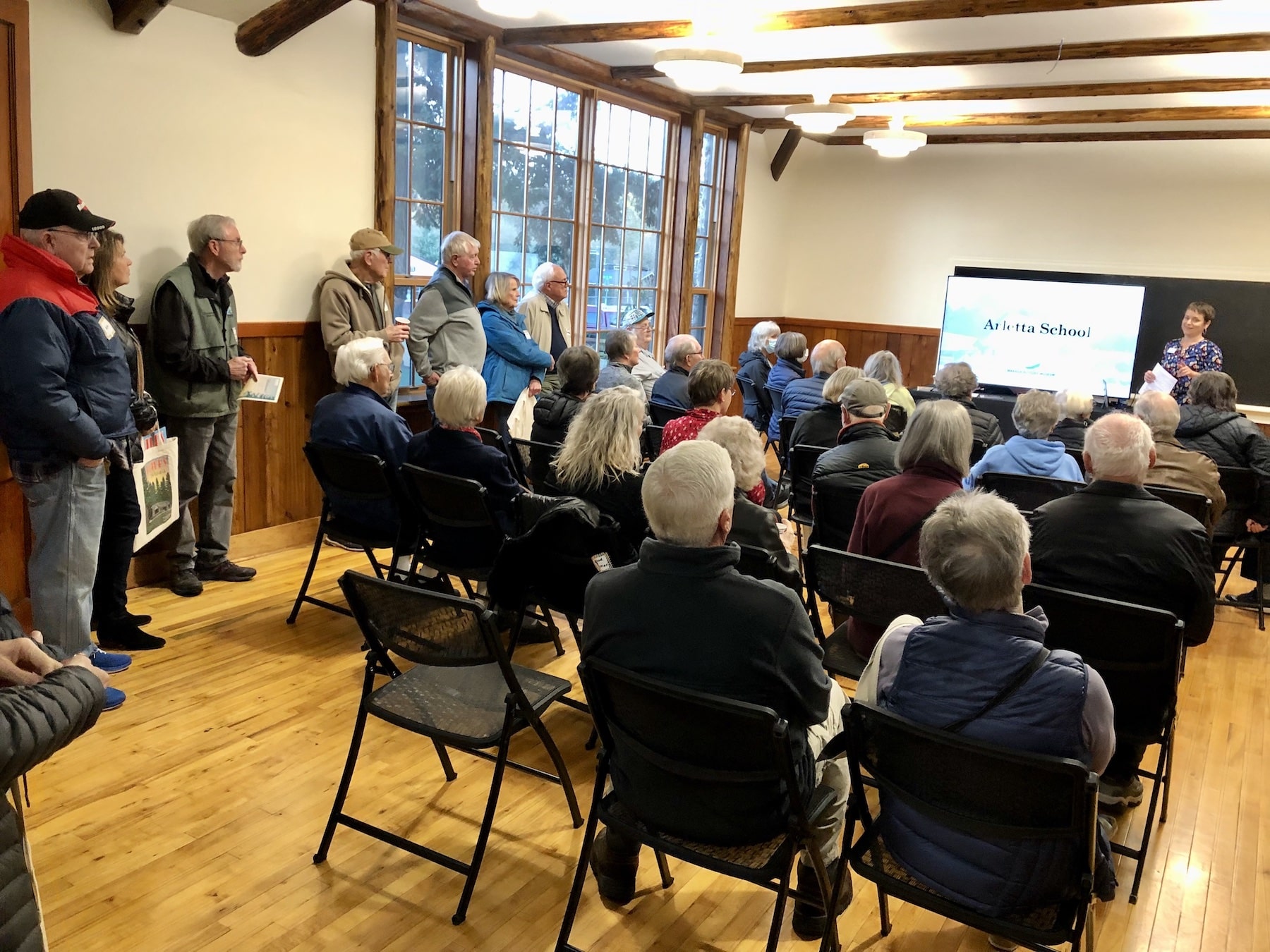Community Education
Renovated Arletta schoolhouse prepared to bond community for another 84 years
Four men who attended Arletta Schoolhouse as kids around 1950 returned Friday to find the place much as they had left it.
Community Sponsor
Community stories are made possible in part by Peninsula Light Co, a proud sponsor of Gig Harbor Now.
Mac Fields, Dele Gunnerson, Jim Grant and Tim Arne were among the crowd on hand to celebrate Peninsula Metropolitan Park District’s $1.6 million renovation of the 1938 building. It housed grades 1-4 until Artondale Elementary was built in 1959.
The folding wooden doors separating the foyer from classrooms on the left and right remain the same. The maple flooring. The dark timbers framing doors and windows and across the ceiling. The thick slate blackboards along the walls. The stained wainscoting. All original.
Even the lights appear to be from the period. What is new, yet hidden, are modern water, electrical and heating systems.
Mac Fields remembers 1949 earthquake
“I would say it’s very similar,” Fields said as he showed a picture of his 1949 first-grade class to PenMet Executive Assistant Robyn Readwin. “I haven’t been inside since back in the old days.”
That’s the only term Fields, 80, attended before moving away. On April 13, a 6.7 magnitude earthquake rattled the area.
“They shipped us all into the backyard and we watched the bricks fall off the chimney,” said Fields, of Gig Harbor.
Fields’ son-in-law happens to be PenMet Board President Steve Nixon, whose cutting of the ribbon capped the ceremony.
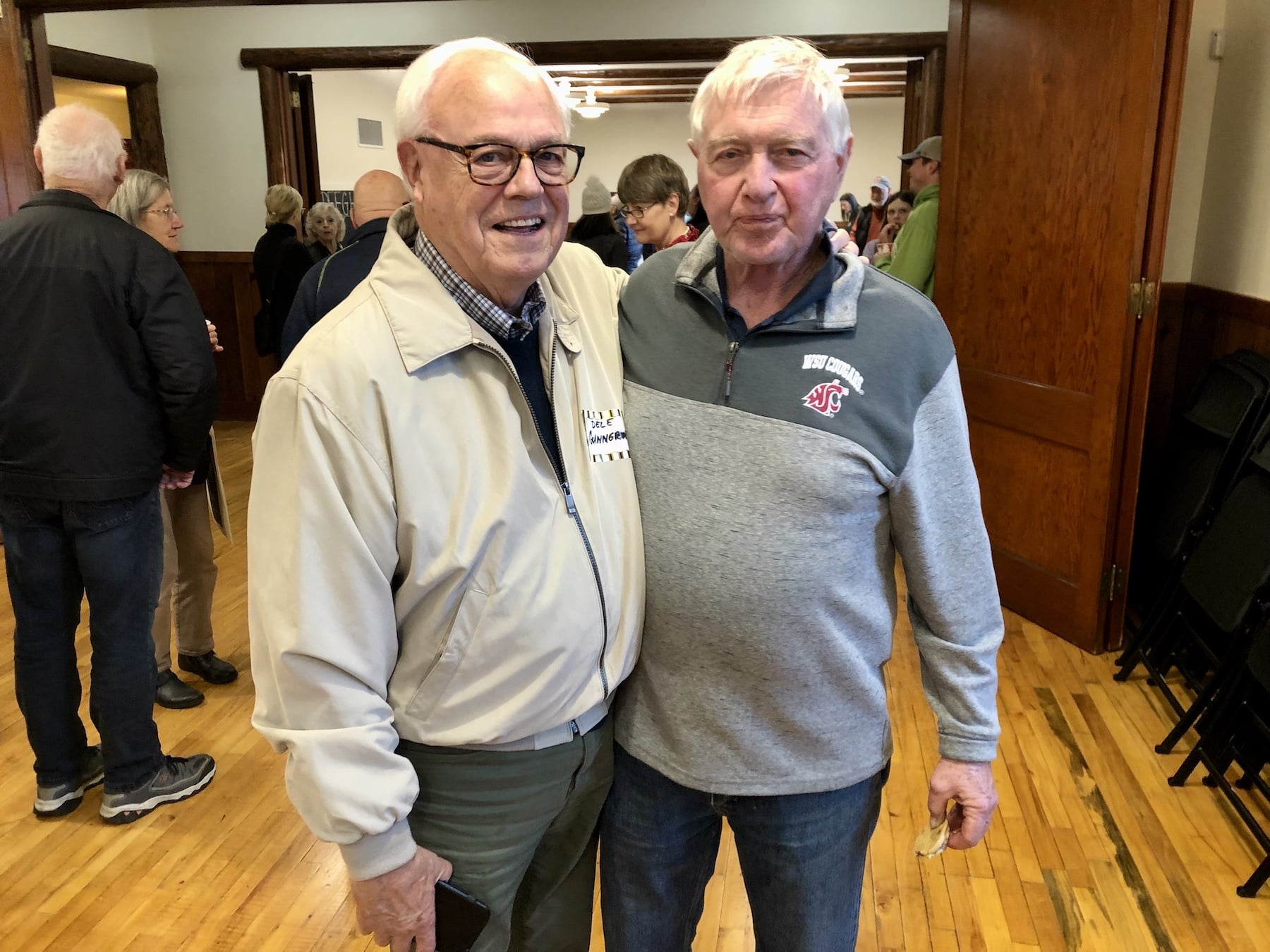
Dele Gunnerson, left, attended during the 1948-49 and 1949-50 school years. Jim Grant went four years beginning in 1953.
Dele Gunnerson, 82, attended third and fourth grade in the schoolhouse during the 1948-49 and 1949-50 academic years. In those days, kids could bring pocketknives and even BB guns to school. He remembers going into the woods and peeling bark from cascara trees.
“We thought we owned the world here,” said Gunnerson. “It was lots of fun.”
The place was ‘paradise’ for kids
All the guys remembered Mrs. Midtsatre, the school cook who sold hot lunches for a quarter. Gunnerson ran one across the street every day to his dad, who owned the Arletta store.
“The school was a paradise for kids,” Gunnerson said. “It was a great, great place, and is a wonderful thing for this community. It’s wonderful that they restored it. It’s beautiful. I mean, look at the floors.”
Gunnerson went on to teach in Peninsula School District beginning in 1963 and served as Peninsula High School principal from 1974-92. He now lives on Hood Canal.
Jim Grant, the youngster of the quartet, matriculated at Arletta for four years beginning in fall 1953.
“It seemed like it was a lot bigger,” he said. “At recess, we did a lot of roller skating in the play shed. That was a big deal for us.”
Kids like to climb into play shed rafters
They also played flies up and workup on a baseball diamond that hasn’t changed much since then, he said.
Grant, 75, lives on nearby Horsehead Bay, where he and Gunnerson grew up. If kids weren’t playing at the school, they were down at the water.
Like Grant, Tim Arne hasn’t strayed far. He still lives on property his parents and grandparents owned a stone’s throw from the school on Ray Nash Drive.
Arne and his four brothers walked the short distance to class. One teacher taught first and second grades in one classroom and another handled third- and fourth graders in the other. Arne, 78, had Mrs. Rose the first two years, beginning in 1948, and Mrs. Denny as an upperclassman, he said.
“I do remember crawling around in the rafters (of the play shed),” he said. “My brothers carved their names in them. We liked to swing around on the monkey bars, climb around on the rafters until we got kicked out, then do it again.”
Arletta Schoolhouse was built by the Works Progress Administration, a New Deal agency that put millions of unemployed people to work on public works projects, in the Rustic architectural style seen in many state and national park structures of the era.
School became Hales Pass Improvement Club
The schoolhouse with twin stucco front gables was constructed on the site of an old community hall that had burned down in the mid-1930s. After the school closed in 1959, Archie Matthew Sr. bought the property from the school district in the early 1960s, said son Archie Jr., who attended Monday’s event. The family donated it to the Hales Pass Improvement Club, which had intended to pay for half but couldn’t afford it, Archie Jr. said.
“Everybody was part of the club if you lived here,” said Matthew, who has lived in the Horsehead area for 60 years.
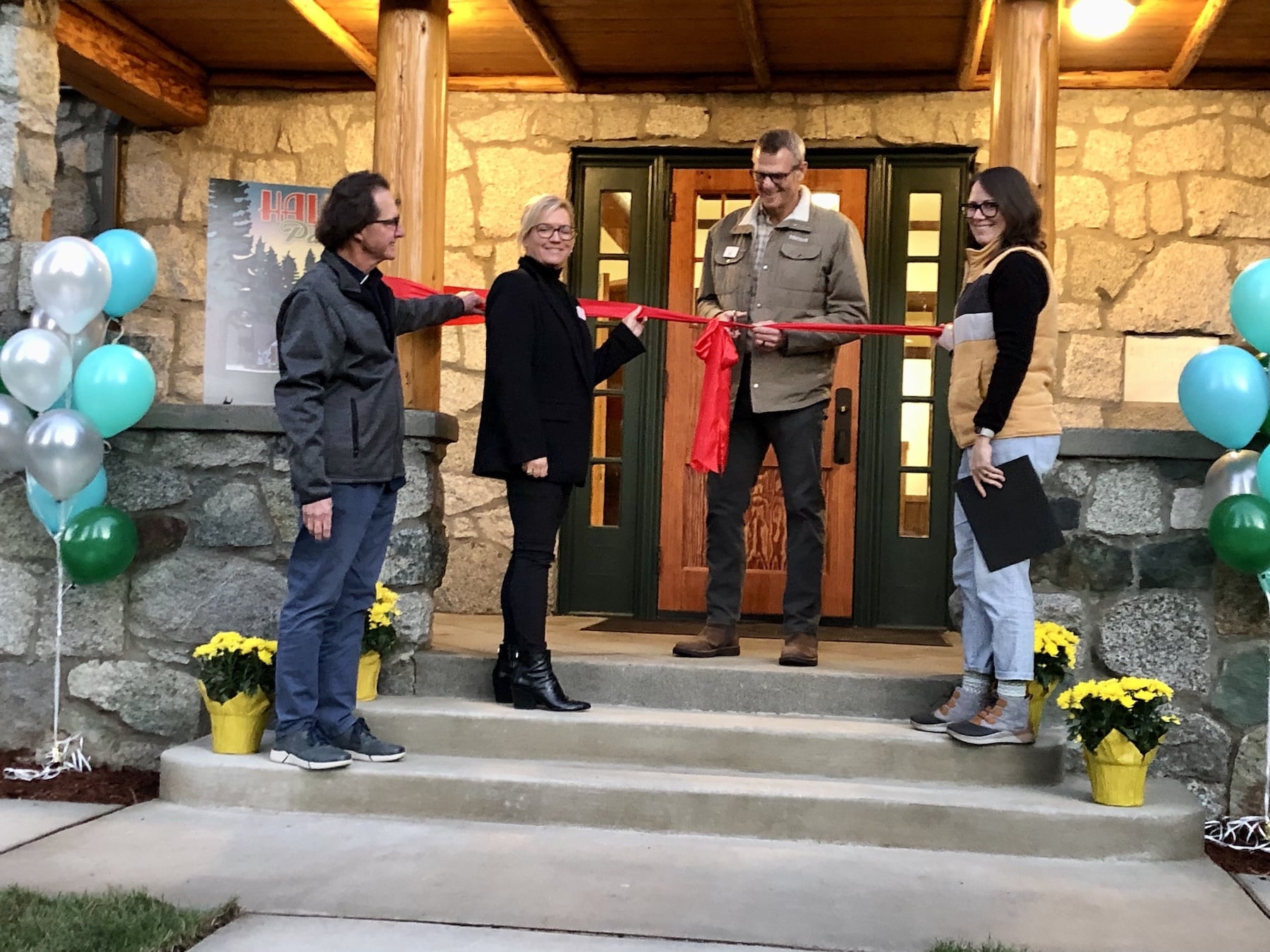
Penmet Board President Steve Nixon cuts the ribbon. Alongside him, from left, are board members Curt Grimmer, Missy Hill and Laurel Kingsbury.
In 1974, Hale’s Pass donated the property to the Pierce County Parks System, which transferred it to PenMet in 2010. The schoolhouse is now the centerpiece of the 4-acre Hales Pass Park that includes a small baseball field, two tennis/pickleball courts, picnic area and forest. The schoolhouse was added to the National Register of Historic Places in 1987.
As part of Monday’s event, Harbor History Museum conducted a history lesson about Arletta schools and displayed artifacts. Three schools predated the 1938 building. The first of single-school Pierce County School District No. 39 opened in 1887, said Education Manager Kate Dorr.
Uncut granite stones that formed the 1938 building’s exterior lower walls came from Oscar Dulin’s nearby property. The surrounding forest produced the lumber. The school district paid for the materials while the feds funded construction through the WPA. Buses didn’t begin running until 1941. Before that, parents who drove kids more than 2 miles to class received a gas subsidy.
Building modernized while maintaining character
PenMet strove to maintain the schoolhouse’s historic character and charm while increasing accessibility and replacing aging systems, PenMet Executive Director Ally Bujacich told the crowd during the ribbon-cutting.
“For 80 years it has bonded the community together, and with this renovation it will continue to do so,” she said.
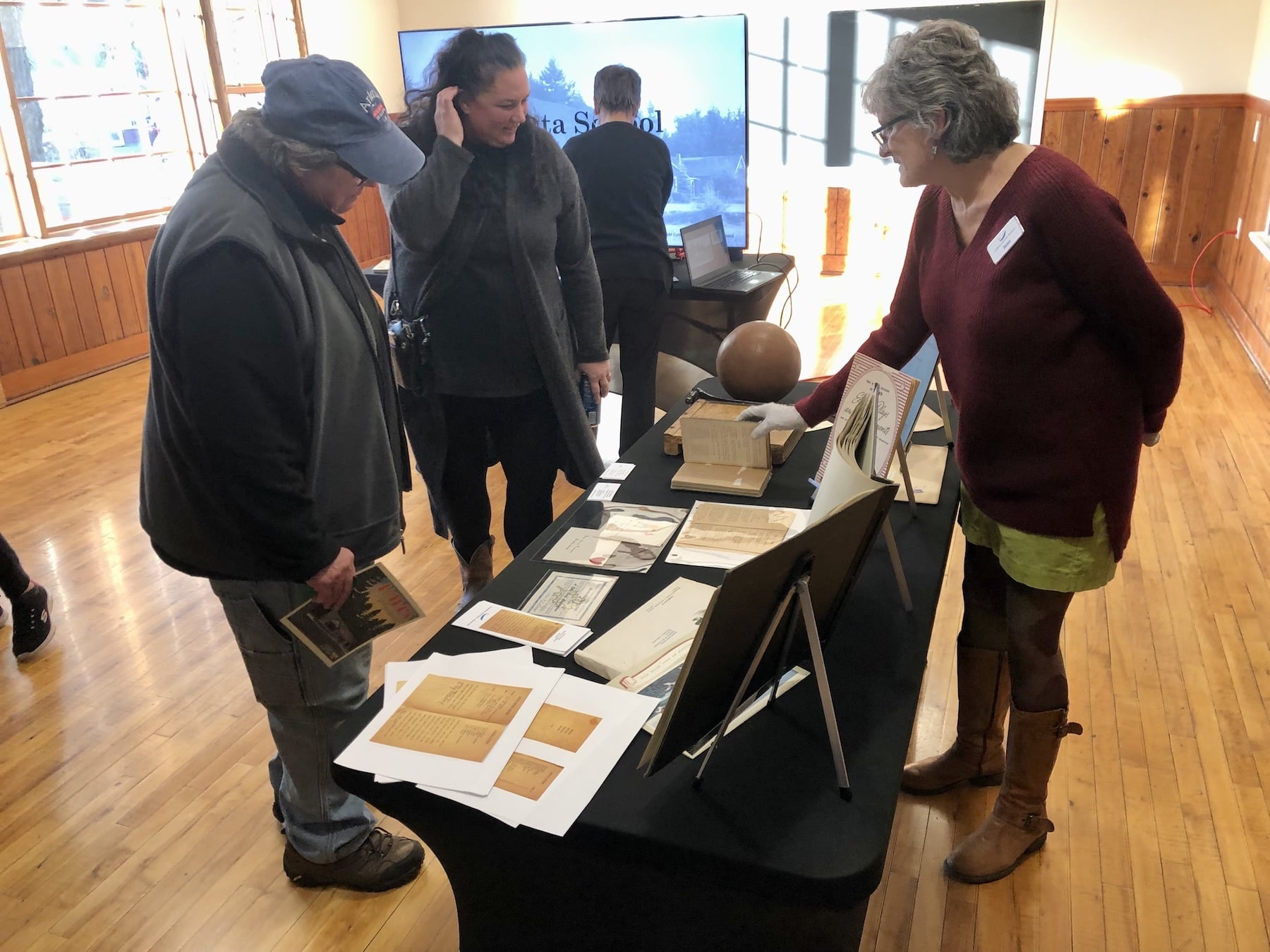
Harbor History Museum Collection Manager Jean Hannah describes artifacts from Arletta schools dating to the late 1800s.
The community can now rent the schoolhouse, outdoor area or both for events. PenMet will also conduct programs there, such as dance, tai chi and SAIL (Stay Active and Independent for Life) classes, Bujacich said.
The renovation was the first project Denis Ryan undertook after PenMet hired him as park services director in December.
“It’s fun to see it finished,” he said. “I think this thing’s going to be booked every weekend. I don’t think it’ll be empty very often.”


